
OUR TOP 4 TRANSPLANTS THIS YEAR
02/21/20 — Ada Broussard
Our annual transplant sale is happening now. You can order transplants online for pickup at a farmers market, or you can make a trip out to Garfield and visit our Greenhouses which, for the next few weeks, have transformed into a public-facing nursery. This year, we are opening up the greenhouse for more dates than ever: Saturday Feb. 29, Sat. March 7, Sunday March 8, Sat. March 14, Saturday March 21, and Saturday March 28th. On these dates, the doors will be wheeled open (they’re on rollers) beginning at 9am and wheeled closed at 1pm. In addition to our transplants, we’ll also have a selection of farm-grade tomato cages and stakes, compost, and fertilizer. In other words, we’re prepared to be your one-stop shop for an amazing spring garden. Last but not least, on Sunday, March 8th, we’re hosting our annual Spring Gardening Workshop, taught by Farmer Becky and Ada of Club Home Made. Tickets and details here.
![]() Want to grow a bounty like this? JBG transplants are poised to produce. Photo by Scott David Gordon.
Want to grow a bounty like this? JBG transplants are poised to produce. Photo by Scott David Gordon.
![]() Farmer Becky has taught the JBG Gardening Workshop for the past 3 years. We're stoked to have she and her Club Home Made partner Ada lead the workshop again! One ticket is good for the whole family. Bring the kiddos - we'll have some activities and volunteers in place to keep them occupied.
Farmer Becky has taught the JBG Gardening Workshop for the past 3 years. We're stoked to have she and her Club Home Made partner Ada lead the workshop again! One ticket is good for the whole family. Bring the kiddos - we'll have some activities and volunteers in place to keep them occupied.
This year, our sale features so many varieties of vegetables. Like an old collector purging their coins, we started this year off by cleaning out our seed cooler. We found so many special seeds that have been hiding back there, waiting to get their moment in the sun. These seeds are some of our favorite varieties, but for some reason or another, they’re not a good fit for our production or farm model. Instead, they prefer the intimate confines of a home garden, room to flourish and an opportunity to be appreciated for their uniqueness. Classic spring and summer plants adorn the selection, too, including classics like Genovese Basil (endless fresh pesto, anyone?) and heirloom tomatoes.
We’re not here to tell you want to plant, because really, there are so many exciting varieties. But! If you do need some suggestions, here are our top 4 picks this season:
![]() The Cherokee Purple Tomato is really more crimson with moments of dark greens and blues. Whatever the color, it's delicious. Photo by Scott David Gordon.
The Cherokee Purple Tomato is really more crimson with moments of dark greens and blues. Whatever the color, it's delicious. Photo by Scott David Gordon.
![]() Our Transplant Sale offers many heirloom varieties. Come check them out in person on the last Saturday of February or any Saturday in March. We will also be open on Sunday, March 8th, when we're hosting our gardening workshop.
Our Transplant Sale offers many heirloom varieties. Come check them out in person on the last Saturday of February or any Saturday in March. We will also be open on Sunday, March 8th, when we're hosting our gardening workshop.
![]() One well-fed and well-cared for Sungold plant will yield huge clusters of the candy-like tomato, all season long. Photo by Scott David Gordon.
One well-fed and well-cared for Sungold plant will yield huge clusters of the candy-like tomato, all season long. Photo by Scott David Gordon.
![]() Basil is always one of the most popular transplants at our annual sale, and for good reason: it's easy to grow and is even suitable for a pot.
Basil is always one of the most popular transplants at our annual sale, and for good reason: it's easy to grow and is even suitable for a pot.
![]() See the tiniest red pepper in this spread? The small red dots, in the far right column? Those are pequins, and they pack a punch. Photo by Scott David Gordon.
See the tiniest red pepper in this spread? The small red dots, in the far right column? Those are pequins, and they pack a punch. Photo by Scott David Gordon.
![]() See you at the greenhouse!
See you at the greenhouse!
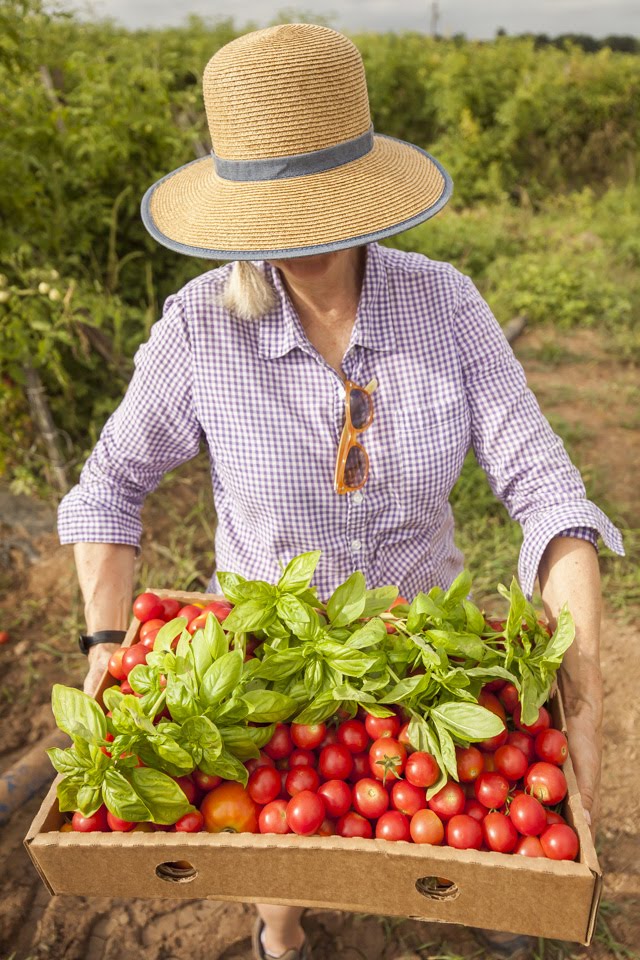 Want to grow a bounty like this? JBG transplants are poised to produce. Photo by Scott David Gordon.
Want to grow a bounty like this? JBG transplants are poised to produce. Photo by Scott David Gordon.
 Farmer Becky has taught the JBG Gardening Workshop for the past 3 years. We're stoked to have she and her Club Home Made partner Ada lead the workshop again! One ticket is good for the whole family. Bring the kiddos - we'll have some activities and volunteers in place to keep them occupied.
Farmer Becky has taught the JBG Gardening Workshop for the past 3 years. We're stoked to have she and her Club Home Made partner Ada lead the workshop again! One ticket is good for the whole family. Bring the kiddos - we'll have some activities and volunteers in place to keep them occupied.
This year, our sale features so many varieties of vegetables. Like an old collector purging their coins, we started this year off by cleaning out our seed cooler. We found so many special seeds that have been hiding back there, waiting to get their moment in the sun. These seeds are some of our favorite varieties, but for some reason or another, they’re not a good fit for our production or farm model. Instead, they prefer the intimate confines of a home garden, room to flourish and an opportunity to be appreciated for their uniqueness. Classic spring and summer plants adorn the selection, too, including classics like Genovese Basil (endless fresh pesto, anyone?) and heirloom tomatoes.
We’re not here to tell you want to plant, because really, there are so many exciting varieties. But! If you do need some suggestions, here are our top 4 picks this season:
Cherokee Purple Tomato
If you’ve never grown your own Cherokee Purple tomatoes, please, do us a favor and plant one this season. Your experience of what a tomato should taste like might never be the same. Like all heirloom tomatoes, Cherokee Purple tomato seeds have been carefully selected by farmers for flavor (rather than consistency). A prized Cherokee Purple tomato should have a deep and dusty color that blends into moments of dark maroons, purples, and greens when ripe. The flesh is a deep crimson, and sliced in a thick steak it’s the ultimate contender for a tomato sandwich - perfecting balancing elements of sweet, acidic, and a deep deep tomato-ey taste. Though we sometimes plant a few beds of Cherokee Purple tomatoes at JBG they require a bit more space and attention that we have the labor to provide on such a large scale. For this reason, it’s up to you.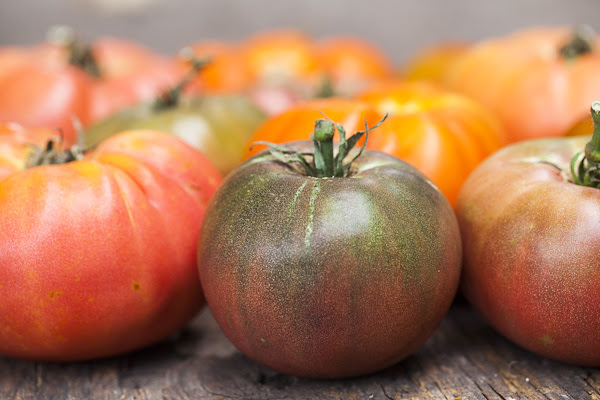 The Cherokee Purple Tomato is really more crimson with moments of dark greens and blues. Whatever the color, it's delicious. Photo by Scott David Gordon.
The Cherokee Purple Tomato is really more crimson with moments of dark greens and blues. Whatever the color, it's delicious. Photo by Scott David Gordon.
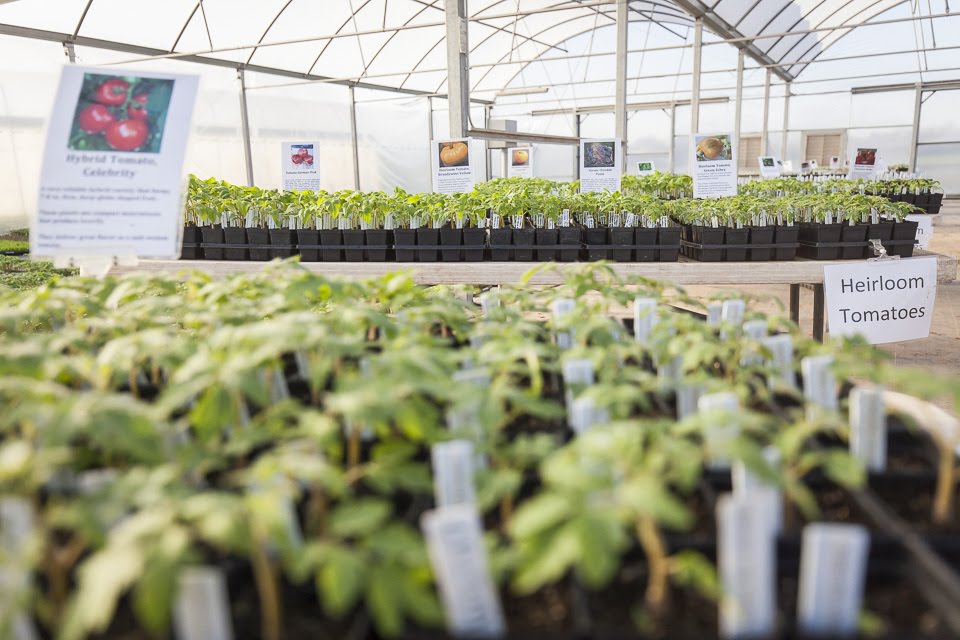 Our Transplant Sale offers many heirloom varieties. Come check them out in person on the last Saturday of February or any Saturday in March. We will also be open on Sunday, March 8th, when we're hosting our gardening workshop.
Our Transplant Sale offers many heirloom varieties. Come check them out in person on the last Saturday of February or any Saturday in March. We will also be open on Sunday, March 8th, when we're hosting our gardening workshop.
Sungold Tomato
Sungold tomatoes might rival Cherokee Purples for the title of most popular heirloom tomato, but the distinctions between these two varieties couldn’t be more striking. And for this reason, no tomato garden, and no tomato salad, salad is complete without both of these delicious varieties. Sungold tomatoes are small yellowish-orange cherry tomatoes. Sungolds are often heralded as the sweetest tomato, and a pint of these cherry tomatoes can be gobbled up like a pint of raspberries. One sungold plant in your garden can grow as tall as 8-10 feet, and if picked consistently, it will produce heavily all season long. Grow 2 sungold cherry tomato plants, and you’ll be gorging on this delicious fruit like a king or queen.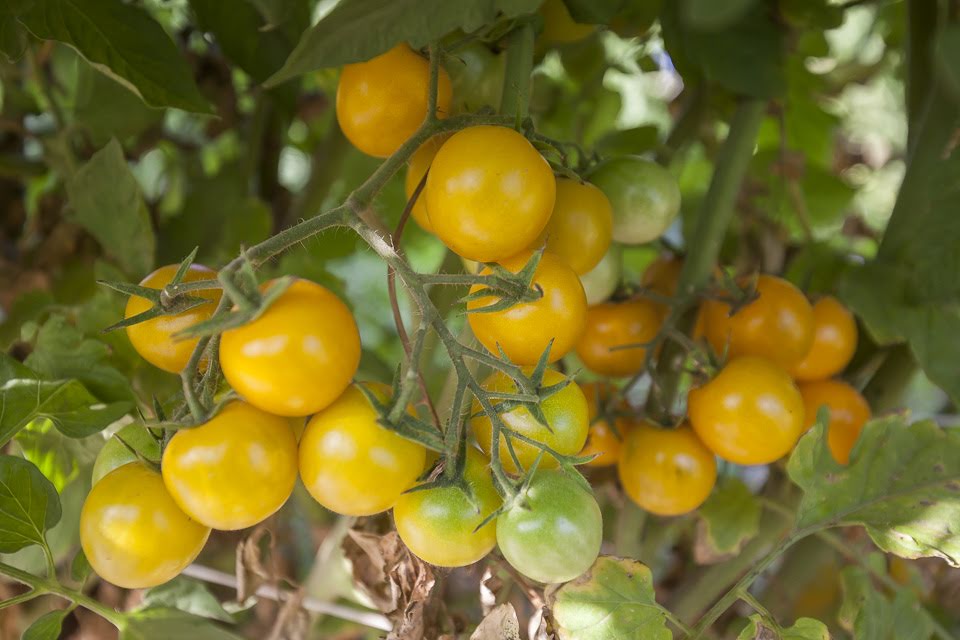 One well-fed and well-cared for Sungold plant will yield huge clusters of the candy-like tomato, all season long. Photo by Scott David Gordon.
One well-fed and well-cared for Sungold plant will yield huge clusters of the candy-like tomato, all season long. Photo by Scott David Gordon.
Genovese Basil
Whether you’re new to gardening or have an almanac of experience, no summer garden is complete without basil. Basil is easy to grow and is undeniably a delicious herb to have around all season - torn basil leaves are as essential to a summer plate as a sliced tomato. A bunch of fresh basil from the grocery store can run upwards of $5, making this common herb feel more like a precious box of saffron. But if you grow basil in your own garden, a productive plant will yield a basil abundance that will leave you feeling rich in green. Huge vats of fresh pesto can be slathered on bread, dolloped on eggs, or tossed with pasta, the extra frozen for colder seasons. Blend basil with olive oil, red pepper flakes, salt and garlic to make a basil oil so good you’ll want to drink it. Fresh basil leaves are essential for a trattoria-inspired summertime lunch, but are also delicious in other worldly cuisines. Plant basil next to tomatoes for some companion planting benefits: basil’s beautiful aroma will help deter pests like aphids, tomato hornworms, and flies - keeping them off of not only your basil plant, but also the neighboring tomatoes.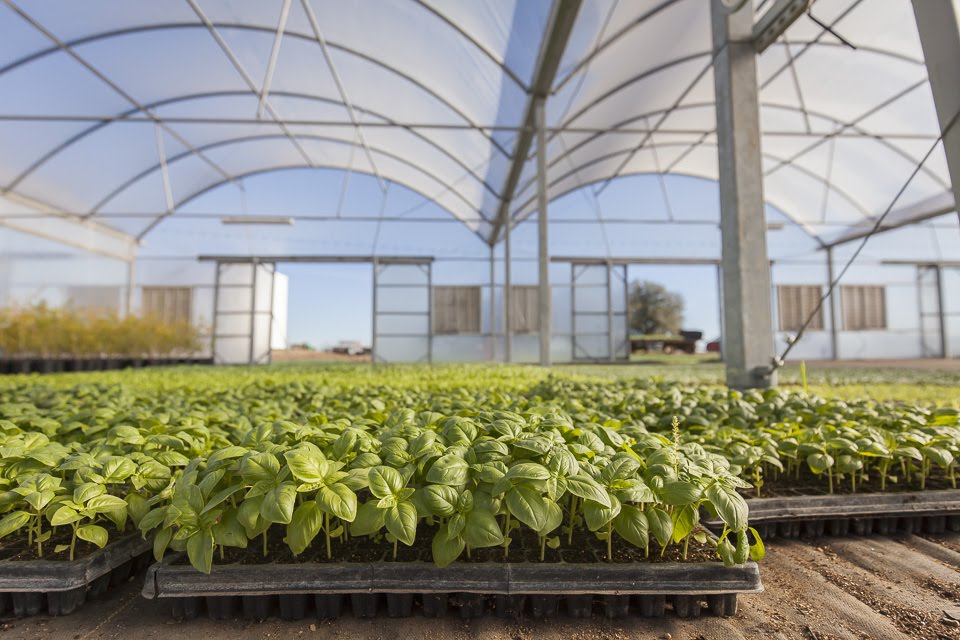 Basil is always one of the most popular transplants at our annual sale, and for good reason: it's easy to grow and is even suitable for a pot.
Basil is always one of the most popular transplants at our annual sale, and for good reason: it's easy to grow and is even suitable for a pot.
Pequin Peppers
Pequin peppers are very small hot peppers, commonly used as a spice but also totally edible fresh. The peppers grow wild in Mexico and parts of the Southwest, and we hope that a few grow wild in your garden, too. Pequins pack a punch: they are a little hotter than a cayenne and about 12 times hotter than a jalapeno. Aka, a little goes a long way. Popular hot sauces like Cholula are made with pequins, and they also make a wonderful red pepper flake when dried. In fact, if you like to cook, your pantry should most certainly be stocked with chili pequin, and the best chili pequin comes from drying and grinding your own pequin peppers. No Mexican dish is complete without a dash of dried pequin. We promise, the process of drying & grinding is simple. To make the dried spice known as Coban, smoke your pequins before drying and grinding. One or two pequin plants will yield many peppers. Plant a couple more to do the Texan thing and make some homemade hot sauce to share. By the time you grow, dry, and grind the peppers, your sauce will be ready in time for holiday favors.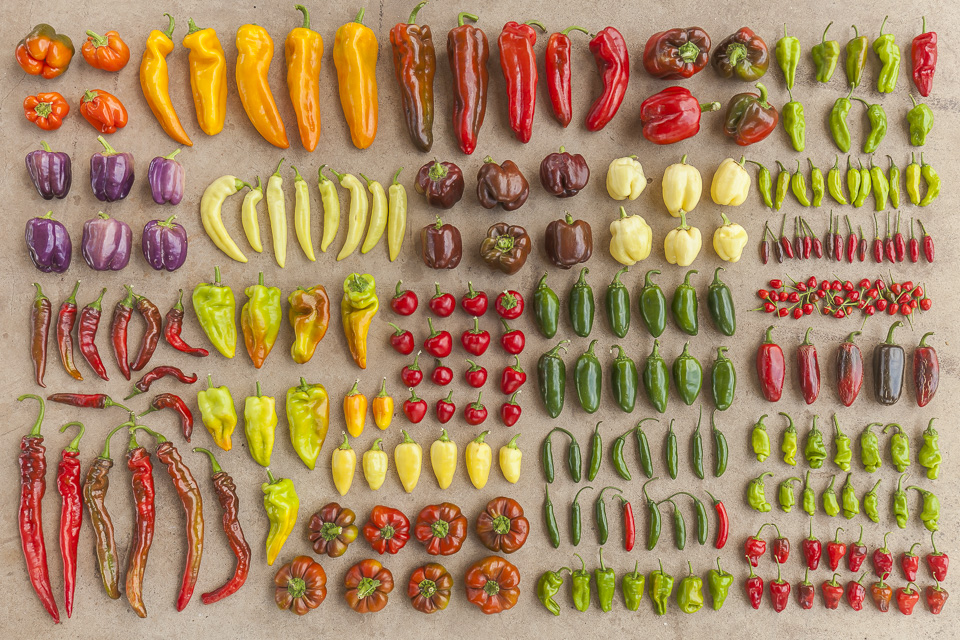 See the tiniest red pepper in this spread? The small red dots, in the far right column? Those are pequins, and they pack a punch. Photo by Scott David Gordon.
See the tiniest red pepper in this spread? The small red dots, in the far right column? Those are pequins, and they pack a punch. Photo by Scott David Gordon.
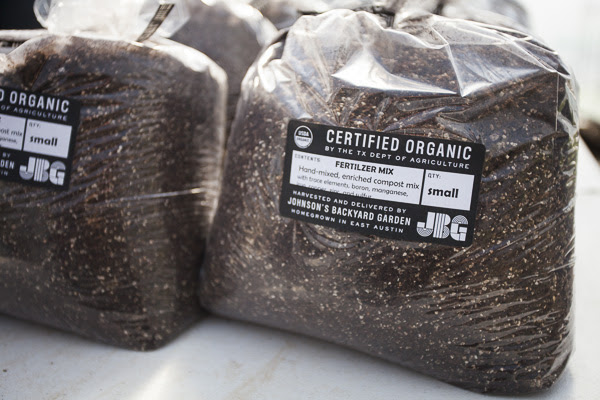 See you at the greenhouse!
See you at the greenhouse!






 0 ITEMS IN CART
0 ITEMS IN CART 

